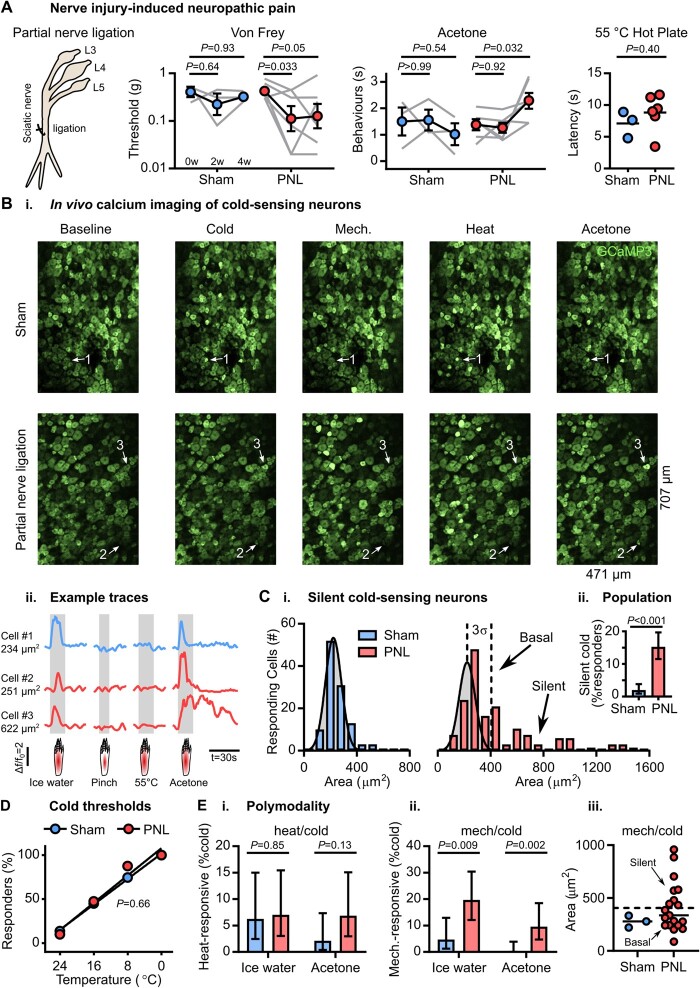Figure 2.
Silent cold sensing neurons are activated after partial sciatic nerve ligation. (A) Behavioural testing of the effect of PNL on different sensory modalities. n = 3 (one male and two females) for sham and n = 6 (three males and three females) for PNL. For Von Frey and acetone tests, means over time were compared using repeated measures two-way ANOVA followed by post hoc Sidak’s test. Hot plate latencies at 4 weeks were compared using unpaired t-test. Error bars denote the SEM. (B) Example images (i) and traces (ii) of cold-responding neurons in sham- and PNL-operated animals expressing GCaMP3. Cell 1 is a small diameter cold-sensing neuron in the sham condition; Cell 2 is a small diameter basal cold-sensing neuron after PNL; and Cell 3 is a large diameter silent cold-sensing neuron unmasked by PNL. [C(i)] Histograms of the cross-sectional area of all neurons responding to any cold stimulus in the sham (top, blue, n = 113) and PNL (bottom, red, n = 109) groups. The distribution of areas for sham was fit by non-linear regression (least squares Gaussian; bin width is 80 µm2; mean = 222.7 µm2, SD 60.9 µm2). This model is plotted over the PNL data to aid comparison with the dashed line denoting 3 SD from the mean. The difference in the distribution of areas between groups was assessed by Kolmogorov-Smirnov test (P < 0.001). [C(ii)] Bar plot of the percentage of responding neurons classed as silent cold-sensing neurons in the sham and PNL groups. Proportions were compared using a χ2 test, and error bars denote confidence intervals. (D) Relationship between the number of basal cold-sensing neurons and the drop in temperature can be fit by linear regression for both groups. For sham, y = −3.603x + 101.6, r2 = 0.9979, n = 51. For PNL, y = −3.875x + 107.8, r2 = 0.9598, n = 40. The slopes are not significantly different (P = 0.66). (E) Quantification of the proportion of cold-sensing neurons responding to either heat (i) or mechanical (ii) stimuli in the sham and PNL groups. The proportion of polymodal neurons was compared using a χ2 test, and error bars denote confidence intervals. Ice-water: nsham = 64, nPNL = 71. Acetone: nsham = 95, nPNL = 73. [E(iii)] Scatter plots showing mechano-cold neurons have both small and large cross-sectional areas in the PNL group. nsham = 3, nPNL = 19. For this experiment, 373 neurons responding to any stimulus were recorded in three sham-operated mice (one male and two females) and 297 cells were recorded from six PNL-operated animals (three males and three females).

